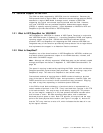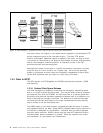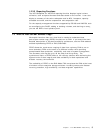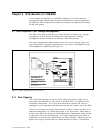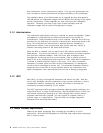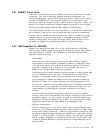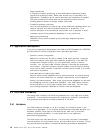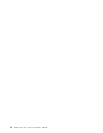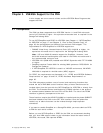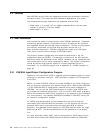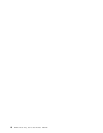
•
Report generation
A large part of batch processing is often dedicated to generating output
reports from production data. Often read access only is required by the
applications. SnapShot can be used to decrease the contention of multiple
read jobs accessing the same data set by replicating critical files and
allowing parallel access to multiple copies of the data.
•
Production problem resolution
You can use SnapShot to create a copy of the production database when you
need to simulate and resolve problem conditions in production. This
reduces disruption to the production environment as it is possible to snap
complete copies of the production database in a very short time.
•
Application processing
SnapShot can be used to speed up any data copy steps during batch
processing.
2.3 Application Development
In the area of application development, the RVA and IXFP/SnapShot for VSE/ESA
provide dynamic volume configuration and rapid data duplication.
•
Dynamic volume configuration
Additional volumes can be easily created if and when required. Using the
RVA local operator panel and device address predefinition in the VSE I/O
Configuration Program (IOCP), you can dynamically create or remove
volumes. You can easily add volumes required to simulate the production
environment. Temporary scratch volumes needed as work areas or testing
areas can be easily created. Production volumes can be cloned to re-create
and resolve a problem.
•
Data duplication (including Year 2000)
Several copies of test databases can be easily produced for several testing
units to use at the same time, for example, maintenance, user acceptance
testing, and enhancements. After a test cycle the test database can be reset
by resnapping from the original with SnapShot. Year 2000 testing requires
several iterations, to verify code changes with a new date. You can snap
your existing production database to create a new test database.
2.4 RVA Data Availability
The design and concept of the RVA are predicated on a very high level of data
availability. In this section we discuss the components, functions, and features
that guarantee and improve the data availability of the RVA.
2.4.1 Hardware
The RVA hardware is based on an N+1 concept. All functional areas in the
machine are duplicated. If one of these areas becomes inoperable because of a
hardware problem, other parts of the machine can take over its functions,
without losing data availability. In most cases there is no significant
performance degradation.
The disk arrays have two spare drives. If a drive fails, the data is immediately
reconstructed on one of the spare drives, and the broken drive is fenced. During
this process data availability is maintained without performance degradation.
10 RAMAC Virtual Array, Peer-to Peer Remote VSE/ESA




